The Empowered Artist : Embracing AI in Photography and Unleashing Creative Freedom with Twyla Jones
As creatives, we can sometimes let fear overwhelm our art, especially when we worry about what everyone else is (or isn’t!) doing. Like, should we try a new technology? Will we be left behind if we don’t use it? What if we don’t utilize it as well as someone else? But, if you put aside your fear, and allow yourself the freedom to create and play, you’ll see amazing results in your work.
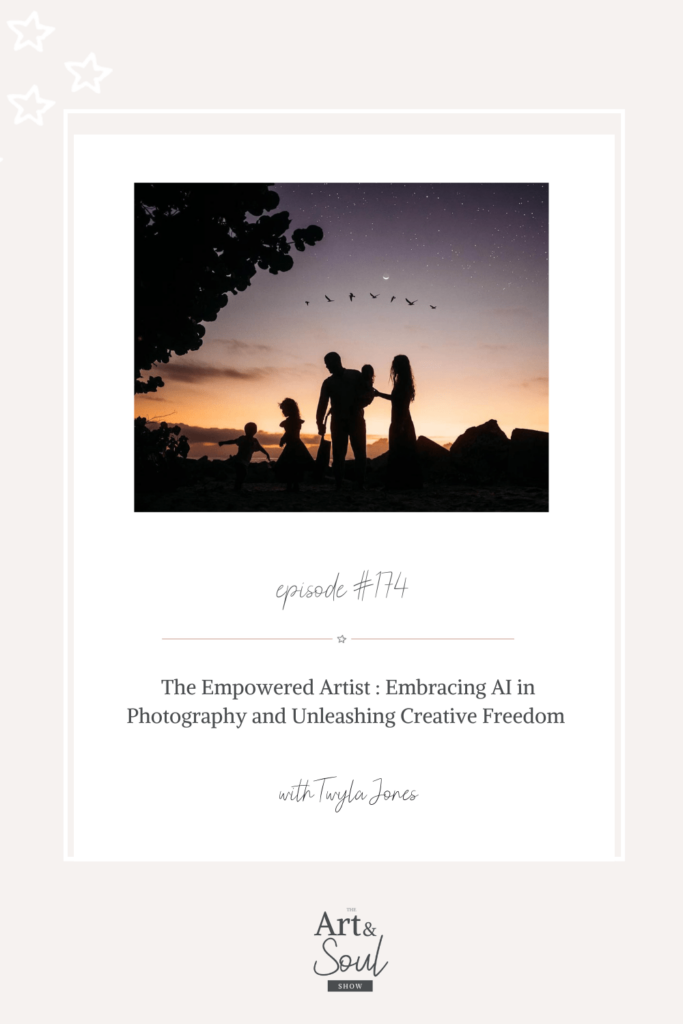
Remember that you are the artist and you get to create in a way that lights you up. Things like A.I. software are just tools to make your life easier and cannot replace you and your creative expression.
In today’s episode, I’m interviewing Twyla Jones, a photographer, educator, and founder of Emotional Storytelling. Twyla shares why we should experiment with our creativity, how to embrace A.I. as a helpful tool, and how to create the art you love without fear.
And if you want to hear more from Twyla and how she’s embracing AI as part of her photography business, she’ll be teaching at our online 2023 Family Retreat! (Grab your spot now!)
What’s in this episode:
- [03:26] Gamification and creating immersive experiences for photography courses and retreats
- [08:36] The fear photographers have about A.I. replacing them and why we have nothing to worry about
- [21:00] How we can use ChatGPT to improve our work
- [25:29] The generative A.I. feature in the new basic Photoshop download and how it can make our lives easier
- [31:18] Why it’s essential for our creativity to take breaks when we’re feeling uninspired and how to redirect our negative thoughts
- [41:09] How to create without fear
Tune in to this episode for how to unleash your fearless creativity.
SUBSCRIBE: Apple Podcasts | Spotify | Stitcher
Resources Mentioned
Podcast episode: Emotional Storytelling with Twyla Jones
Meet Twyla
Twyla Jones is a Kansas born biologist turned photographer and educator, who now calls the picturesque east coast of Florida home where she raises her three wild boys. With a passion for inspiring fellow creatives to uncover their own distinct paths of success, Twyla generously shares her worldview and expertise. She founded Emotional Storytelling, a platform providing community education and resources for photographers and co-founded the Traveling Dress collective. Twyla’s emotive directing style helps her shape her portfolio and how it delves into the human experience. She understands the challenges of monetizing artistic expression and strives to guide photographers and transcending self-imposed limitations, allowing their unique voices to emerge. Through her teachings in intuitive posing, eye catching editing techniques and transformative mindset shifts, Twyla empowers photographers to create more meaningful and rewarding work that captivates audiences and leaves a lasting impact.
Connect with Twyla
Did this episode inspire you to embrace your inner artist and create without fear? Check out this episode Connective Storytelling Photography … No Business Needed! with Lindsey Shedd that offers you even more insight on finding alignment in your business!
Transcript
[00:00:00] Twyla Jones When you’re a different type of photographer that like you are like documentary, like that’s already in I don’t know the way that you talk about your work and that is very present with your clients and they’re drawn to you for that. And also my clients are not coming to me because I can put some birds in an image. I think most of the time it’s like, I mean, if I’m doing it right, it’s like, I hope we get some birds, but it’s not like they’re hiring me. Just if I never put birds in an image again, I would hope that the value and what I’m actually doing as far as like photographing their connection with each other and the emotions I choose to show, that’s why they want to hire me, not because of any of the extra stuff. It’s almost like the extra stuff is for me. All right, I like that. So it really is kind of connecting that to what is actually valuable about what you’re providing to your clients and the experience you provide. Not about all of that other stuff. If you’re into the all that other stuff is way faster to do now.
[00:01:00] Lisa DiGeso Welcome to the Art and Soul Show where we dive into heart opening chats on photography, business life and that messy in between. I’m your host, Lisa DiGeso, a mom, a photographer and entrepreneur, and I’ll be sharing honest conversations and advice for photographers with insight on mindset, entrepreneurship and creativity. The goal of this podcast is for you to be able to gain insights and strategies that will get you real results. Because let’s face it, having a photography business can be lonely, but it doesn’t have to be. This is the place you can go when you need a boost of encouragement, a kick in the pants and inspiration to pick up your camera. This is the art and soul show. Hello, my beautiful friends. Welcome back to the show today. I’m super excited to dive into today’s conversation with my lovely friend Twyla Jones. Twyla is on one of our very first podcast episodes and I’m super, super excited to welcome her back and catch up because it’s been almost three years, which is crazy. Now Twyla is a Kansas born biologist, turned photographer and educator, now calls the picturesque east coast of Florida home where she raises her three wild boys. With a passion for inspiring fellow creatives to uncover their own distinct paths of success, Twyla generously shares her worldview and expertise. She founded Emotional Storytelling, a platform providing community education and resources for photographers and co-founded the Traveling Dress collective. Twyla’s emotive directing style helps her shape her portfolio, and it delves into the human experience. She understands the challenges of monetizing artistic expression and strives to guide photographers and transcending self-imposed limitations, allowing their unique voices to emerge. Through her teachings in intuitive posing, eye catching, editing techniques and transformative mindset shifts, while it empowers photographers to create more meaningful and rewarding work that captivates audiences and leaves a lasting impact. She’s also one of the coolest people I know. So without further ado, here is my dear friend Twyla. Welcome.
[00:03:08] Twyla Jones Thank you for having me. I can’t believe it’s been three years.
[00:03:12] Lisa DiGeso Isn’t that nuts? Like it was like right before the pandemic that we launched the podcast. And we were just like, we had no idea.
[00:03:22] Twyla Jones We’re like, all completely different people now.
[00:03:25] Lisa DiGeso Seriously? Right. Completely different. So tell me something amazing. What’s going what’s amazing? What’s going on in your world right now?
[00:03:30] Twyla Jones Probably my definition of amazing is not the same other people, but instead, the most fun thing that I’m doing right now is rewatching my editing course. Yep, I like this stuff. I do this because I’m like really, really into this stuff and interested in it, but I’m moving platforms and doing it in a way like adding gamification and badges and surprise and delight, all of that kind of stuff, fun stuff, and just really kind of thinking more about like creating immersive experiences like across platforms that that lead into real life as well. That sounds like I don’t know. I don’t know.
[00:04:11] Lisa DiGeso You’re just talking my language. I love it. So what platform are you going with?
[00:04:16] Twyla Jones Kajabi. I’ve been there a long time. And it just provides like a better experience and looks nicer. And that’s just so important to me. Like, I couldn’t get very excited about updating stuff or even designing, like, a module with Teachable. Like, they were good to me, but. So anyway, I don’t know, I just moving to a job has me very excited about it and it’s important. I’ll talk about this later, probably, but that I have some kind of like novelty incorporated within whatever I’m doing, or it can kind of get boring to me. And so I’m thinking about that as part of the student experience as well. So meeting this to be like adding the things like gamification into lessons and achievements, stuff, just thinking of ways to just make this a lot more fun so that you actually just like learn in ways that empower you. So just thinking about stuff like that is.
[00:05:17] Lisa DiGeso I love it because I love it. It was funny because you mentioned that because in the shower this morning I was thinking about how you like with retreats and stuff and gamification and like just helping students learn, you know, like, how can we help our students get the results that they want and learn?
[00:05:33] Twyla Jones Well, and also beyond that, beyond even just the learning is the experience and how can we make these experiences and help cultivate connection, which I think is just ultimately what anybody is really after just in this experience of being alive. Yeah. And so I really do. I guess we should plan something because I got some ideas, some weird ideas, but that are just like, completely immersive in the experience. So it’s experience design is what this rabbit hole I’m just deep into. And it’s just so fun to think about because you think about everything from the very beginning to like literally when they’re traveling to get to the retreat. How can you create an experience out of that and give them things that are just kind of like adding into it and make it feel something that is just like completely special, unique, like customized and magical in some like very weird way, like an experience you could not get anywhere else. You know, you create this whole different world or something. It’s a lot.
[00:06:48] Lisa DiGeso But I love that so much because, you know, it’s so funny with like the photography industry because you really, like, you hear a little bit about that. But I was like, I like I think what what could we do if we really put our noodles together and like gamified and changed up how the client experience looks for our photography clients in that kind of way too, where it’s like they are obviously only ever going to pick you because you have created that, that just like life changing experience for them. And it’s just like it’s I just think it’s so fascinating. Like there’s like we could go so much deeper.
[00:07:23] Twyla Jones I know. I just it’s like we need a series or something. Like, I’m already just I can feel those rabbit holes like tugging at me just as we, I already get into these topics. And to add on to that, because I know that we are going to be talking about A.I. a lot. That is the significance and that is where you like to really shine and actually why it’s so amazing. But I think it just really helped shift the importance of creating experiences for people that are like real so that it’s almost like your photos become secondary in a way because you created such a unique like space for people to connect or had this experience Like that was the number one. And now they also have these photos to remember it. By now they’re super attached to these photos because it was something real that they want to remember, opposed to this thing that we just like baked kind of. And that’s why you’ll see people making their profile photos, some iPhone shot they took. That’s not even in focus now. Like what? I just took these amazing photos for you. But it holds significance in another way.
[00:08:35] Lisa DiGeso Yeah, totally. I love that you brought up A.I. because we have we’ve had a few conversations about it and I think it’s so fascinating. But what I actually find so fascinating is the fear around the A.I. And that it’s going to replace photographers because I completely disagree with that. But there is so much fear that photographers really forget what it is we do. It’s not just holding the camera and taking the picture and editing the photo. It’s like it’s how you make people feel like you’re magic. And I just find it just like I’m just like, Don’t worry, you guys like A.I. is not you.
[00:09:11] Twyla Jones Well, you know, it’s kind of like that becomes the problem when you start trying to focus on, I want to be a better photographer. So how can I pose exactly like this person? How do I get better at editing just like this person or if I just had these presets or whatever. But it’s actually just so much deeper than that and it’s not about like the poses, the props and all of that. It’s about the vision and the connection and the way you’re connecting with other people and allowing yourself to show up as you just the way you are and not thinking you need to put on some kind of performance for posing really, but like really kind of showing up as yourself so that you have this like connection to your creativity and you’re able to create in the moment inspired by them and where you are and create this just experience so that it’s not just like this list of stuff that you’re checking off because when you make it so mechanical, it’s replicable. Like you can duplicate this experience, and then in that way it becomes something where I Sure. So it’s the same thing as like if somebody painted a photo of me, I would love that you like it. I would love that. But it’s not the same as somebody that also takes a photo of me, maybe even in the same pose. But that was real and that was me and my kid experiencing something. And it is like a token, a souvenir of that real, real experience, you know, not just me, like maybe like looking good in a painting or something. And then that’s where I could just really replicate something in a very real way. So it really is leaning more in to that experience and the connect. You’re helping create for people. And you seen that in your client communication and across everything.
[00:11:07] Lisa DiGeso Yeah, it’s funny because we want to get reminds me a little bit it’s like, you know, like when you buy like a picture frame and there’s like a family in there. Mhm. And you don’t just like display the picture frame with that family in there because it doesn’t mean anything to you.
[00:11:21] Twyla Jones Yeah.
[00:11:22] Lisa DiGeso Right. Like you need to put what you love in there and I kind of feel like I like I’ve seen some where people are like, yeah, like here is a picture of a baby and like give some newborn photos, which honestly, like, to be honest, AI needs some work because you know who solid fingers is. Like, all the fingers are like solid fingers. It’s terrible. It’s terrifying.
[00:11:42] Twyla Jones Well, so, like, in some of the earlier versions of Journey, it’s like you would get a hundred teeth in a mouth. Like it’s I mean, it’s getting so much better as they, like, keep updated. The fingers are so much better, the teeth are so much better. But sometimes I’ll accidently be in like an older version and then you just get this like it’s it’s like, I think should be here or it’s like very tiny or just disappeared. They’re just very creepy, Super creepy. But in a way that I also like, I don’t know, I think.
[00:12:15] Lisa DiGeso It’s hilarious. Like, I just get such delight. Like, I was like, good try. Like, you’re funny. They’re basically like, I’m getting a five year old to draw a quesadilla or something, right? Like, it’s just it’s hilarious.
[00:12:28] Twyla Jones Yeah. Yeah, I love it.
[00:12:30] Lisa DiGeso So we have both because it on the topic of A.I., we’ve both been playing with so much. So I think, like, it’s, it’s fascinating that it can be used as a tool. Now, you actually had a fellow come on to your page. I think it was for after shoot. Now, can you share a little bit what after shoot is and how it uses A.I. and how can help photographers in that kind of way?
[00:12:52] Twyla Jones It’s awesome. It’s kind of like the thing I always needed as an over shooter or just decision fatigue that comes with going through so many photos is can be overwhelming. And I’ve tried to develop lots of different workflows. If our colleague goes to address that for myself and I really love last year. So I started using stacks more in Lightroom. So stacking lots of photos that were similar just to kind of like a I don’t have to think going into Lightroom, I’m just going to stuff all this stuff and then I could see this big picture of what I actually created. I could see a representation of each individual thing that I considered different, if that makes sense. And so after you actually can do that automatically. So already saving all of that time and you can set up different ways of allowing it to do that. So getting into like the high calling part so I can tell it how lenient I want it to be and what it’s kind of considering like a stack or they’re calling it like these are duplicates. So you’ve got a photo and then these are all the duplicates. So how picky do I want it to be? Do I want it to have to be exactly like I’m still looking this way and like smiling? Or can I be like this? You know? But most everything else is pretty similar. And so you can play around and stuff like that to get better results. And basically the idea is to get more or less photos to have to go through it yourself at the end. And it’s also using AI to pick out the best photo from this stack of duplicates and bring it to the top. And so now, just like with a click of a button, it can go through this whole session and then you can really kind of like see what you got to work with. And then it also is basically like categorizing different things. So it’s going to pull out all of the images that seem to be unintentional, closed eyes. So now we can just go into that, the unintentional closed eyes and see where they’re actually some of these where it didn’t get it right. I want these out of that. And then it’s also going to categorize blurry images. So now I can go into that. Are some of these intentional artistic blur or unintentional that looks cool. I’m going to doing that so I can get away with that blur. Yeah. So, yeah, exactly. Oh, I could make those black and white and like, that’s fine. I’m going to add a lot of grain that I meant to do that. This is my style. So but also as you’re doing that, it is learning your preferences. So now we can go through everything that it selected and the ways that it grouped it and it said this was the best, but you’re like, No, this one’s the best. I did this one best. So it’s a little bit of work in the beginning to really get it customized to your taste, especially because my biggest concern, you know, as somebody that’s more of an emotive photographer, that once those photos of you walking away from the camera, I don’t want you to look at me and smile. You know, I was kind of afraid that those would be the defaults. But what it’s going through is what you did. It’s going through what you created and showing you. I think this is the best I think this is what you meant to do here. Basically, this looks like the best version of whatever you were trying to do, because I’ve heard a lot of concerns from photographers that A.I. could never replace the way I cull or I’m going to miss out on that award-winning shot or whatever. But it’s not. It’s still showing you everything that you did, it’s just grouping it together and making it a lot easier for you. Because you it’s still a collaboration. You still have to tell it and pick, but it cuts down so much time and just having those shots grouped together. I mean, again, I was doing that manually either with stacks or using survey mode to call in Lightroom. So I could just kind of see everything together and then try and pick out what I thought was the best. So to have it kind of say, here’s an educated guess, or based on your past preferences, like we think you’re going to like this one. And so that’s just so nice and I’m just excited to see it develop and get better and better. And I know that they’ve got all kinds of cool updates and stuff coming up.
[00:17:09] Lisa DiGeso So I yeah, I think it’s fascinating. I downloaded it, so I downloaded a trial a few a couple months ago and I forgot to cancel the trial. So I ended up paying for a year, which is like, no biggie. I was like, I’ll probably do that anyway because it sounds like it’s so good, right? And then I started diving into it. But there is I’m actually not a Lightroom user, but I did see you could take past Lightroom galleries and like load 5000 in there and it can learn your editing style. And I was like, That is cool.
[00:17:40] Twyla Jones Yeah. And I couldn’t believe how good it was for the editing. Yeah. Because what I did was I have this catalog and I’m kind of always optimizing and playing with new strategies, workflows, whatever. So as much as I will tell you, it’s so good to have a consistent way of sliding your images. Mine just keeps evolving and it just feels like I am doing work for my course. Let me try this, you know? So anyway, so my concern, what held me back from getting started on that editing part was that I felt overwhelmed about going through and picking actual images that represented by images or my editing style or like, how am I going to go through and find which ones were done or the best, like everything that I did. But what I did was I found some ways to create some smart collections in Lightroom that would sort of like kind of just capture everything. What I ended up using was anything cropped and anything with a color edit. And so it put those in a folder for me because by cropped it, I probably was pretty much done with this edit right? That was like my qualifier.
[00:18:54] Lisa DiGeso So is it like are these like things that you have already edited in Lightroom or are these like JPEG finished files that you’ve imported back into it?
[00:19:02] Twyla Jones Yeah. So these are raw files, like a complete edit because also I have all of the Photoshop edits, so those come back in, but those are like tips. And so those aren’t going to be helpful to me. And building an AI profile that needs to learn. This was the raw image and this is what you chose to do with it. And then it actually is better if you have a range of different kinds of photos. So not even your best work. How are you handling it when these lighting conditions were not ideal? And then what are you doing? So it wants like a lot of stuff. So anyway, I just I really was like, I just need to get started on this. Like, let’s just, like, start somewhere and see what it gives me. And so I made that and I just didn’t want to go through every single one. So I’m like, I have probably get enough. So definitely there are probably some where I was playing around with edits but not believing it anyway. So I did it just so pleasantly surprised with how good and right on and just what a good starting point it was giving me. And a big thing for me, photographing at the beach often is like they’re all crooked. And so that’s why the crop thing ends up being helpful for me because I have to straighten almost anything. So you can have that auto straighten, you can have an auto crop even, and then it’s just so good it like hitting the exposure and white balance for me because I also underexposed a lot because I want the skies and the images, just very colorful images of anything is going to be white. I got to underexposed for whatever that’s going to be. And so culling can be difficult because I can’t see.
[00:20:39] Lisa DiGeso Yes.
[00:20:40] Twyla Jones When in the image a lot of times a bit too underexposed. So that also is just been incredibly helpful to have it get pretty accurate exposures and white balance is for me if that’s all it did, that would be amazing.
[00:20:52] Lisa DiGeso Yeah, I love it. Well, I’m waiting for your AI workflow course to come out that I will be taking.
[00:20:57] Twyla Jones Yeah, I need to do that.
[00:21:00] Lisa DiGeso Now, have you played a lot with ChatGPT at all?
[00:21:03] Twyla Jones Oh, my God. We are best friends. We are best friends. So I feel like I’m an overwhelming person when I have ideas about something or when I’m excited about something. Like, I can be overwhelming. And so it’s been really nice to be able to just write these, like, run on sentences like you’ve never seen before, because it’s just like spitting out all the ideas. I want it to be this or like, developing an idea where, like, I want this to feel like this. And I like this specifically. You know, like, I just love something about quotes. But it’s like, I don’t want it to be. I don’t want to have an actual cull. And I was trying to distinguish this feeling where it was like, I want to have a cull, but I don’t want to be the one people worship. I want it to be more like worshiping each other, like celebrating each other, cultivating this like, connection thing. And so it was really just like I was just like, writing out all these, like, wishes about something that I would really want to, like, just do for the community. Like, cultivated so far. Yeah. And thinking about, like, real life experiences and stuff. And so getting to put all of that in and tell it like, and I also like this. And I like this and I hate this. What if you make sense of this? What does this mean? What do I actually want? And then what it gave me was just like, yeah, is that is it? So just synthesizing my thoughts for me and just sort of making sense for them was just so incredible.
[00:22:42] Lisa DiGeso Yeah.
[00:22:43] Twyla Jones And to know that it’s not I mean, of course, it’s like by itself, it’s like this data that it’s been like, I don’t know, like learning from and understanding it. This is just like a language. It’s just predicting words, basically. But to know that it’s just different, talking to a person who’s going to have their own kind of biases and things like that and being able to talk to it in a way. So kind of like the people pleaser or whatever, or not wanting to tell somebody something that might hurt their feelings. Like, I don’t like that idea or I can just tell it like, that was terrible. That is not a good idea. I hate that and then give it feedback. So I think in a way it’s making me a better communicator.
[00:23:24] Lisa DiGeso Yeah. I love that. It’s so funny. I have been using it for like. Like I get I get a little bit of writer’s block. And so I find just like plugging in like give me like X, y, z ideas about blah, blah, blah, blah, blah. And then it spits out of all these things. And I’m like, Oh my gosh, my juices are flowing. I’m not taking what it’s writing verbatim, but I’m using it as a tool, as a starting point to like, unleash my own creativity.
[00:23:48] Twyla Jones Yeah. Well, and that’s why in general, I like about I it gives you a new jumping off point so I can describe, you know, even with the image creation, I can describe a feeling I want to visualize or kind of give it some elements that were incorporated and see where it gets. So we’re almost like collaborators, like, where does this take you? And then it’s like. I didn’t think of that. But that kind of like that is the essence of this also. So now I’m going to jump up from here. Or when you have an idea about maybe a session or styling for a session, sometimes just trying to tell somebody that isn’t going to be they’re not going to get the same picture in their mind as you. So being able to create visualizations to share with like the subjects that you’re photographing or just collaborators in any kind of way, like I had this idea for this thing and this is sort of like where I’m going. I’m like, This is what it’s going to look, feel like, whatever. What do you think? And get anybody else on board or more excited or even just help them go to the thrift stores and buy the pieces that are similar to the styling. So I’ve done that for mood boards for photoshoots lately. But yeah, the same thing with JP, just kind of like putting these ideas into it, see where it goes or even asking it to interview you. I think just the clarity it can give me when I am sometimes overwhelmed with too many thoughts, ideas or whatever. Or it’s like I know the feeling of this that like, help me, how can I communicate it, like, more efficiently?
[00:25:26] Lisa DiGeso It’s like a little AI therapist also. Well, it’s funny because we were like last we were talking about, I guess what is it called generative AI that is in the new basic Photoshop download, which is so cool. Yeah. Oh my gosh. So yesterday I was editing and I was like, for the love Lisa, I didn’t change this little boy’s shoes. And I have him in this, like, antique outfit, the super vintage. I just plugged in. I just lassoed it, plugged in like rustic, old fashioned boots, like. What? It was flawless. Like flawless.
[00:26:02] Twyla Jones It’s incredible. So I had an interesting talk with somebody in my DMs, so the other day I made some funny videos about it.
[00:26:12] Lisa DiGeso Right. They were like.
[00:26:14] Twyla Jones Give me a flock of birds. And it was this giant pelican.
[00:26:17] Lisa DiGeso It screws up birds every time. It’s like, give me the little birds in the distance.
[00:26:21] Twyla Jones Except first time I used it, It was perfect, right? And I was like, Yeah. And now it is not. I don’t know what happened. So anyway, I had just shared, like, you know how it works. And then I did another one that was just kind of like, fails. Like every time it was me, just like, trying to get me like, how could I see this better? So maybe I’ll get a better result. All right, let’s try. Like, I just want to add something to this. So anyway, it was funny and just a lot of, like, mess ups. But anyway, they were really concerned about creators showing this and showing how it works and how easy it is, because now their clients are going to expect them to be able to do this for them. And I was just like, it’s actually the thing is, we’ve always been able to do what it’s allowing us to do right now. It just took us a long time and our clients thought it was this easy. It just is now. It just is as easy as everybody always thought it was when they said you could just Photoshop that out, right? Yeah. I was like, Yeah, well, how do you Why? What? You want to hippo there?
[00:27:30] Lisa DiGeso Want to remove your ex husband? It’s fine.
[00:27:31] Twyla Jones Whatever you want. Yeah. And, and especially that like with the shoes and stuff because that would be laborious and that would be like, I have to go find the shoes that I would want to put on and resize them, you know, just sort of like also as his details like that, it just would have been so much work and now it’s just so much easier.
[00:27:54] Lisa DiGeso I just think, if we can, why not? It’s like, you know what I imagine? You remember like when so back in like probably the 1950s when people started getting those cake mixes in the store, you could get a cake mix. And like the outcry there must have been when like, people were like, Oh my gosh, that’s not a cake. Everybody can make a cake.
[00:28:10] Twyla Jones That’s so funny. I thought of so many instances where this is like where people really do seem like nervous, scared about it being replaced or whatever. And I know that’s where, like, questions like that come from, concerns like that. They’re just, you know, afraid. But it’s like when we went from film cameras to digital cameras, like, you know, everybody was like, that’s not real photography, whatever. But there are still people today that value film. Yes, photographs. And we’ll pay top dollar to have you because you can do that over digital and it’s the same thing is like right now. Like I’ve always been adding shit to my images, I’ve always been adding some birds and some sun, whatever. Like, I like doing that.
[00:28:58] Lisa DiGeso Yeah, I’m a compositor that’s who I am.
[00:29:02] Twyla Jones It’s not like I am, I don’t know. I just feel like it kind of adds to the thing. But that is my style, you know? And I don’t think that it’s like there’s any confusion about that or what you would expect when you get for me. But when you’re a different type of photographer that like you are like documentary, like that’s already in I don’t know the way that you talk about your work and that is very present with your clients and they’re drawn to you for that. And also my clients are not coming to me because I can put some birds in an image. I think most of the time it’s like, I mean, if I’m doing it right, it’s like, I hope we get some birds, you know? But it’s not like they’re hiring me. Just if I never put birds in an image again, I would hope that the value in what I’m actually doing as far as like photographing their connection with each other and the emotions I choose to show, that’s why they want to hire me, not because of any of the extra stuff. It’s almost like the extra stuff is for me. All right, I like that. But so it really is kind of connecting back to what is actually valuable about what you’re providing to your clients and the experience you provide. Not about all that other stuff. If you’re into the all that other stuff it’s way faster to do now. It’s way easier to do now. And I like it because this idea of like kind of gatekeeping around information or the need to have lots of money to learn how to do certain things from courses or whatever. I love that that is not a barrier anymore. Yeah, because I got another message about that too. Just like, no, everybody’s going to be as good as anybody. I’m like, Awesome. Because what that allows is more creative expression. It doesn’t mean anybody is going to be doing what you’re doing. They don’t have to. Like now they’re free to just like, think things and make them, you know, and not so caught up in the technical parts of it.
[00:30:50] Lisa DiGeso So that everybody trying to fit in like it’s okay to stand out in a different way, figure out where you can stand out, you know, like it’s just it’s really it’s really cool. It’s a really neat time to be an artist, I think.
[00:31:03] Twyla Jones Me too. I just love it. I’m like, All right, what’s up big today? What can we do today?
[00:31:09] Lisa DiGeso I know it’s like you’re a new update. I’m, like, checking for updates. I’m like, Yeah, am I going to buy this? Like, do I need to buy this? I’ll buy it now.
[00:31:14] Twyla Jones Right.
[00:31:18] Lisa DiGeso So I know you’ve actually taken a big step back from client work and having a bit of a reset like I am now. Can you share maybe why sometimes it’s essential for our creativity to take these rests when we’re feeling uninspired and burnt out.
[00:31:31] Twyla Jones Well, I think for me specifically, it was like a lot of burnout trying to do all of the things at once. And when you do that, you definitely can set yourself up for failure as you start, I don’t know, like falling behind, not doing as good as you thought you should have. I don’t know. And then. That can definitely get you into a place mentally that’s not very good. And I think me specifically, I was really noticing, like my perfectionism really showing up and all of a sudden things were taking me a really, really long time to get through. And it was just kind of like unsatisfied with the results. I would end up even after spending all this time doing things. So that was difficult and just really kind of hard to figure out. But I think it’s the thing you’re not always conscious of about like how you’re talking to yourself when things like that happen. And I heard the best analogy the other day and I shared it with my son, who also experiences this. I mean, he is only ten, but he will just believe bad things about himself, maybe because of an experience at school or with another kid, or because he didn’t do good at something. And that has been the best kind of mirror almost, because so many times I catch myself trying to help him and it’s like you’re talking to yourself. Like you also need to say that to yourself because you’re doing the same thing to you, but it’s like almost so easy to see when it’s him or anybody else, you know. So anyway, the analogy is that you are not your thoughts. Of course we know this, but we so you can think of things as these thoughts just pop in, but you’re more like the observer of the consciousness. So this is similar to Woody in Toy Story. So Woody comes preprogrammed with these things that he says, so you can pull his string. Or like the idea is he could pull the string or somebody else could pull his string and make him think this thought, this preprogramed thought. So if somebody said something to me that would be like, I’m pulling my string and now I’m thinking these bad things about myself. And so acknowledging that this is like this programing that you develop through society interactions and social media, when you start comparing your work to somebody else’s, when you give any kind of weight to a negative thing that said to you, those sort of just kind of create more of the same types of thoughts. And so acknowledging that this isn’t real, like this is here, but I didn’t put that there, would I choose the things that would I choose to think that like for somebody else and like, definitely not. And so the idea that you can just choose which ones you’re thinking on, which ones you are giving any kind of time to, which ones you want to kind of like replicate over themselves. And so I think if you start to get into like a bad place like that where it’s just like what’s the point? I’m just adding to the noise almost, you know, I think taking a time out to just really kind of evaluate what is going on in your mind and what it is you’re kind of needing to get into a better place and recognizing when it is maybe like negative thought patterns like that and and just really kind of, I don’t know, realizing you can take control over that and choose to just think new thoughts for yourself. And that was something I had been trying to communicate to my ten year old for a long time. But that analogy of the pull string, there’s a snake in my boots, like he’s so much more magical than a doll that says There’s a snake in my boots and he can create and just like make change, be brave, all of these sorts of things. He’s so much more than these, like pull strings. But so now with my son, I just any time he starts doing that, I say there’s a snake in my boot and he’s just like, You’re right. And it just worked. And I was just I’m like, That’s amazing. And so I just need to be saying that to myself a little bit more often, but also really recognizing when it’s somebody else pulling that string to like what led me here. How did how did I get here?
[00:35:51] Lisa DiGeso Why am I being triggered? Like, what’s triggering me, right?
[00:35:54] Twyla Jones Yes. Yeah. So I’m just going to, like, cut that little loop off.
[00:35:58] Lisa DiGeso I love that. You know, what’s funny is. So funny that we’re talking about this because this morning I was in bed, I woke up early and I was reading Gaby Bernstein Super Attractor. And there’s a part in there where she’s talking and it’s like this three simple thing about my management and I’m going to butcher it. And it was funny because I actually changed the terms, so I would remember and it was O.A.R. And it’s observe, so observing yourself that your thoughts and the thoughts you’re thinking. Assess, so what does this thought mean to you? How is it making you feel? And redirect, so redirecting that thought, if you change that thought to something else. How is that going to change your life? How is it going to change how you’re feeling? And I was like, Wow, this is good. This is good, right? Like, just like because it’s something that we are never really taught how to do is that we are the thinker of our thoughts. And just because you have a thought about something doesn’t mean you have to believe it. Yeah, right. It doesn’t mean it’s even true.
[00:36:52] Twyla Jones You can’t think like this is this is magically here for a reason. No, it just isn’t like they’re not all good thoughts. Like, No, the ones that cross your mind are not worth, like, thinking about. And when and when you also recognize. If I choose to go down this like, rabbit hole with you thought, where is that going to lead? So I think that I will just choose a different one today.
[00:37:17] Lisa DiGeso Totally. Or even like what is the best possible thought that I could think around this?
[00:37:23] Twyla Jones Yes. Yes. And just imagining alternatives. What if I believe the other one? What actions does that lead to? Because it all starts with the thoughts like that’s where your actions come from. Like the next thing that you do comes from it. It’s even the idea of like with body image, like thinking if I was like thinner or looked better, then I can wear these clothes that help me express myself better. And then I would feel like going out and then I could have fun with people. And that all stemmed from a thought that like, I don’t look good in these clothes I wish I could wear. And so if you just change that, like you could wear those clothes right now in a different size and you can you still have the ability to go do all of those things that you are like keeping from yourself because of this one messed up thought. Like where did that even come from?
[00:38:17] Lisa DiGeso Right. And that’s not even true. Like, why are you choosing to even believe it?
[00:38:20] Twyla Jones And would you believe that for somebody else?
[00:38:23] Lisa DiGeso Yeah.
[00:38:23] Twyla Jones Would you say that out loud to anybody else? Oh, like you’re just so awful to ourselves.
[00:38:28] Lisa DiGeso We’re so awful. What’s been really fascinating for me is so last year, I got diagnosed with a thyroid disorder, and it was causing me to gain weight. And no matter what I was doing, I just couldn’t. Couldn’t shake it. I was like, super low calorie was working on every day you got in yoga and no matter what I did, it just kept gaining more and more weight. So finally went to a new doctor, a naturopath, and she finally put me on some new medication. Since January, I’ve lost almost 40 lbs. And it’s been fascinating because along the way I was like, You know what? Regardless of how I’m feeling and how I’m looking, I am going to show up 100% to how I want to look. And instead of waiting until I was at like ideal size or whatever goal weight or whatever, if I ever get there, I don’t really know. I have shopped and dressed my body in such a loving way throughout this whole process that even if I were to like like that has been more transformational for me than actually losing anything just because you’re celebrating yourself through like regardless.
[00:39:31] Twyla Jones Well, and I think also, you know, sometimes it can still be hard to find the motivation to do that. But if you recognize that just the act of you doing that, you’re showing up the way that you are as imperfect as you may believe you are, and showing that you’re celebrating and expressing yourself in whatever size however you are physically manifested right now empowers other people to be able to do it, because you are showing yourself as the example, like when they see, Oh, I could be like, like look at that. And like and I think that they’re so beautiful and I see them enjoying themselves like, just like that and I see me. And that that empowers others to be able to do it. And that’s like how cultures created, like society is created. And so when we let ourselves hold ourselves back out of fear or anything like that, we’re feeding into this idea that we all have to look perfect before we can have fun, before we can be happy, before we can have like all these friends, before we can go dance on the dance floor, you know, and just how awful.
[00:40:37] Lisa DiGeso Yeah. Stop playing small and shine your light friends. Yeah, right In your life. And even, like, in your art, like, I think it’s so easy as an artist to play small too, because, you know, doing something that may be fringe or like, something out there and you’re just like, I don’t know, like, how is the world going to take this? Like, I think that there is such a cognitive dissonance because you want to stand out and you want to fit in. And as an artist, you can get stuck there, like you almost put yourself inadvertently in a box.
[00:41:09] Twyla Jones Yeah.
[00:41:09] Lisa DiGeso How do you. Because you’re someone who really is an expert at creating without fear. I feel like when I see your work, I’m like, man, like, I just love that, your freedom around your art. What advice do you have for maybe someone that has that fear?
[00:41:24] Twyla Jones For me, it was really kind of recognizing. I think it kind of goes back to like boredom again. And I recognize that myself. I just I it hurts to do the same thing twice, even though sometimes that means like, I’m going to have to take the longer way around or whatever. But it maybe it’s too a little bit of being like, I just want to be adding something. I don’t just want to feed into the noise of creating the same photo over and over again is a little bit what it feels like to me, and it just needs to be this authentic expression of creation. And I think I have just really like that is one thing that is easy for me is creating, but I think maybe, like I recognize that the creating happens in the moment and we so we, I just did that course for you. And that’s really like my message. Like you do not have to go study other work. You don’t have to write a list of poses and prompts and all that if you. Allow yourself to be fully present in this moment that’s been created for you to create. Recognize that you’re a creator because you’re good at creating. You don’t do that beforehand. Let yourself create right now so that you can kind of like, I don’t know, you. You feel the emotions that you want to convey in these images. And for me, kind of like tapping into that feeling, What do I want this to feel like right now? That’s where the visions come from and that’s how it’s created. But it’s inspired by where I am and who I am with, and I have to be fully present in order for that to happen. I’ve tried other kinds of ways, and I think that’s important too, to try all these kinds of ways to find out what works and what doesn’t. And the times that I’ve tried to take like a list of poses to, you know, intentionally create a story or like the trick where you take pictures on the back of your camera so you can quickly reference as you’re going through. That took me out of it. Like I was not here with these people anymore. I was preoccupied by what I thought this should look like instead of just being able to see what it looks like and what I had to work with right here, right now. And I think constraints are invaluable as a creator. When everything is possible, that can bring you to the point of shut down almost. That is overwhelming. But recognizing your constraints in the moment and this is what you have to work with. These are the people you have to work with. These are the temperaments available right now. What’s the most emotive story I could tell about this child crying? And his mother is right here and his family is here. Like, what could that look like in the most emotive way? And then you’re kind of able to just I mean, I don’t know, for me it just feels like everything’s inspiring. Everything has a potential to be a different kind of story that I could tell right here with my camera. And of course, again, and that is like the value you provide as a photographer. The seer like, let yourself see instead of just being caught up here. And I think to for me, like I feel the most free when I’m doing that, when I am photographing it is just pure creation, having ideas and having these people that are here to help me implement them. They’ll listen to whatever I say. I just get to make stuff and that is just so invigorating to me. It’s part of like why I cannot stop, you know, like I started bringing light so I didn’t have to stop when the sun went down. And I said before too, I feel like I blacked out. So it’s like I’m so fully present. I am just like, lost in it. And I’m like, what just happened? And also, can we stay here forever and keep doing this? Because it is just a different kind of feeling I don’t experience when I do anything else. And I’m saying that to you as a person that is definitely like up here a lot. I intellectualize a lot of stuff and I am just lost in my own thoughts a lot. And so I think that it’s just such a nice break from that. Maybe getting to create, it’s.
[00:45:34] Lisa DiGeso Just to play and create. I think I get to that place sometimes. So what happens for me is I stop myself because I get afraid to take a bad photo. Yeah, I, you know, like the perfectionism starts to win and I get so in my head that I freeze a little bit that I’m going to take a bad photo. And I’m so deathly afraid of taking a bad photo that I stop myself from being as creative as I can possibly be.
[00:46:03] Twyla Jones Yeah. And I think another thing I recognized early on was like, sometimes I would tell somebody to do something and it was like, not a good idea. Like, actually that doesn’t look good. Or it’s not like what I thought it would do. And I would like sometimes just keep photographing it because I would feel bad, like needing to tell them to do something else. And then when I recognize, like, no, like that’s holding you back from getting to do something that you want, but you also had to try that. You have to try lots of different things to figure it out. And even like in the video I made for you, like that happened, I had this idea about this like lifeguard tower that was going to be really cool. And I had this whole family go up there and stuff and I get up there, I’m like, Oh, I went there and I looked like this. Like really was the way I was going to be. But that’s so important. I mean, there is then like I ended up doing them a little bit, but, you know, I had to really try it and know and that’s what it looks like every single time. I’m always trying lots of different stuff and sometimes they work and sometimes they don’t. But if I stopped, I’d stop growing. And sometimes the bad idea inspires the next good idea. You know, that didn’t work, but I can take this little piece from it. Or like, next time I go, now I know it doesn’t work on the life Guard thing, but now I’ve got. A better idea about what might work better. And I also recognize, too, that it’s never happened, that I’ve never had enough to get to somebody. So I have room to make mistakes and take bad photos because I already I mean, I’m overwhelmed with photos to give. So I’ve got room to make mistakes here and it doesn’t have to be perfect. And also, I would rather underwhelm them with my performance as a photographer in the moment. And then for them to say, like, when did you get that? Or like, I can’t believe this is what you created from that or whatever, know, and just kind of like, just wowing them in the end with the results.
[00:48:10] Lisa DiGeso Yeah, I love that. They love that. So you ready for our Lightning round?
[00:48:15] Twyla Jones Oh, okay.
[00:48:17] Lisa DiGeso Morning person or night owl.
[00:48:19] Twyla Jones Night owl. Sometimes. Morning person, though. I go through phases. This is not a lightning round. I can’t do a lightning round. So I got to wake up and go watch sunrise every day at the beach. And then that turns off. And then I’m just up till like 4:00 every night. I can’t. I don’t know.
[00:48:35] Lisa DiGeso Yeah. Both. I go through phases of both. Like. Like the other weekend, I slept until I went to bed at 1030, and I slept until 11. And I was like, Who am I? And then the next night, two days later, I was like, I’m up at 5 a.m. like yoga. And I’m like, I don’t know who you are, girl. I don’t know.
[00:48:50] Twyla Jones I know.
[00:48:53] Lisa DiGeso I’m both.
[00:48:55] Twyla Jones Okay, I’m going to try to lightning round now. All right.
[00:48:57] Lisa DiGeso What did you want to be when you grew up?
[00:48:59] Twyla Jones A mermaid and then an advertiser.
[00:49:02] Lisa DiGeso Side note, have you watched the new Netflix mermaid show?
[00:49:04] Twyla Jones No, but I’ve heard, like, everything amazing about it.
[00:49:07] Lisa DiGeso You should watch it. I watch it.
[00:49:08] Twyla Jones I’m going to.
[00:49:11] Lisa DiGeso Go to song that lifts you up when you’re down?
[00:49:14] Twyla Jones I’m weird. I listen to, like, a lot of melancholy stuff. It’s like I feel this way, and I want to feel this way even more. Ooh, Kesha, Praying. That would be like I go there. Yeah.
[00:49:24] Lisa DiGeso That’s a good one. Oceans or mountains, and why?
[00:49:27] Twyla Jones Oceans because they are, like, safer. I mean, little kids. And where they can have the best time and where, like, if everybody’s safe, I feel more freedom to create. Instead of, like, mom cooking. And also now I also have to keep you safe so I can just do more and more things to move around and explore. And I do love mountains also. They could be in the background of the ocean. That would be ideal.
[00:49:55] Lisa DiGeso When do you feel most authentically yourself?
[00:49:57] Twyla Jones Literally, when I’m taking photographs of people.
[00:50:01] Lisa DiGeso What is something you’ve accomplished as an adult that your younger self would be proud of?
[00:50:06] Twyla Jones Oh, I probably. Well, I grew up really poor, so probably buying a house that I bought all by myself and that I think our ideas of money are different. Well, I’m from a very small town in Kansas, so $100,000 would have been like a mansion. So to like, I mean, I just never thought that that would be something I could do. Yeah.
[00:50:27] Lisa DiGeso I love that. Where can our listeners learn more from you?
[00:50:30] Twyla Jones So my website emotionalstorytelling.com kind of has is home to a lot of my offerings as far as like education and things and things that I think are useful valuable mindset stuff around being a creative. There’s like a blog, there’s courses, there’s free resources, all of that. And that also leads into my Facebook community of other photographers. So that would probably be the best place.
[00:50:54] Lisa DiGeso So I love to end my interviews just with this last question, and it is what are you currently curious about or artistically curious about?
[00:51:03] Twyla Jones I mean, A.I. Of course, I am definitely hyper focused on A.I. Right now, but also video editing, but in a way that it’s like, well, creatively too, like creative storytelling and with video editing, but also in making better educational videos. I think it’s just such a great skill and I just want those to feel creative but be helpful and just really kind of cater to like obviously I have like ADHD and so I want to be able to like cater to other people that also have that and that comes and creating really kind of compelling, interesting videos so that I feel like that’s what I’m really focused on trying to learn a lot about right now.
[00:51:50] Lisa DiGeso I love that. Well, Twyla, thank you for joining me today.
[00:51:54] Twyla Jones Yeah, I love talking to you.
[00:51:56] Lisa DiGeso I love it. I love it so much. We can talk forever.
[00:52:00] Twyla Jones Absolutely. Yes.
[00:52:02] Lisa DiGeso Oh, my beautiful friends, I hope you have loved this conversation just as much as I did. I am sending you so much of my light and my love today and every single day. We will see you next time. I wanted to take a moment to ask you a little favor. I still appreciate you spending your time with me and tuning in and listening to this show. I would be so incredibly grateful if you could take a quick moment to leave a review on Apple Podcasts. Your review helps other photographers discover the podcast and learn how to grow their own photography businesses and gain confidence to go after their dreams. It also means the world to me personally and helps me know what content you find most helpful. Thank you so much for your support and for being part of our amazing community.
share the love
[Sassy_Social_Share]
1 Comments
Leave a Comment
recent
Podcasts
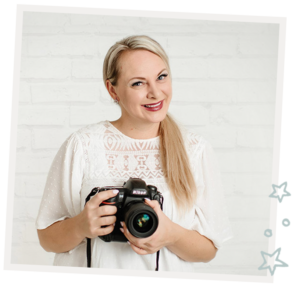
I'm
Lisa DiGeso
I’m on a mission to create uplifting online experiences for photographers ready to elevate their art, their business and their mindset.(...and have fun along the way!)

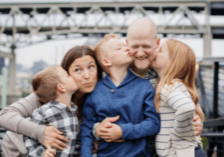

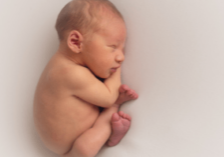
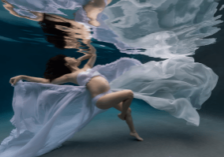
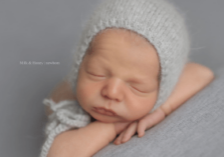
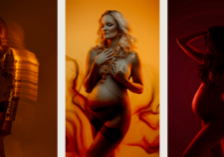

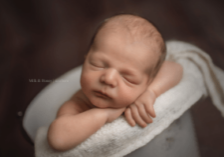
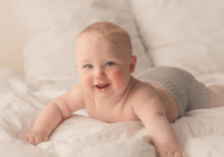
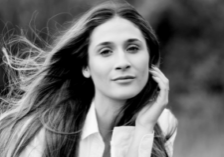
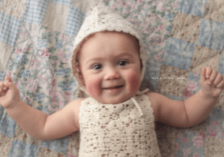

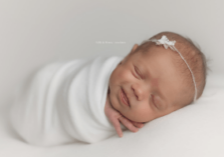

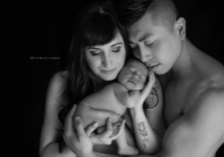
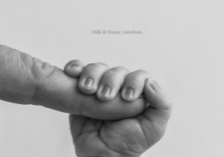
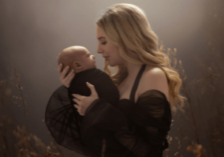
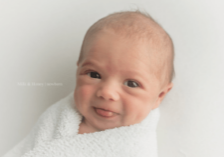

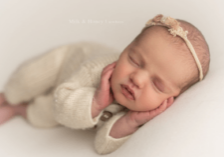
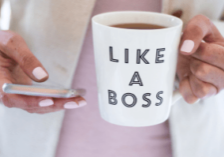

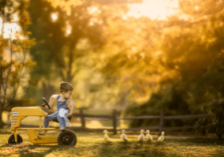
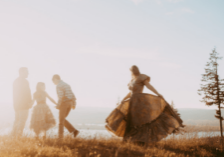
[…] one day when I stumbled upon an article that completely shifted my perspective. The piece, titled The Empowered Artist: Embracing AI in Photography and Unleashing Creative Freedom with Twyla Jones, spoke to me on a profound level. As I read the words of Twyla Jones, a talented photographer and […]